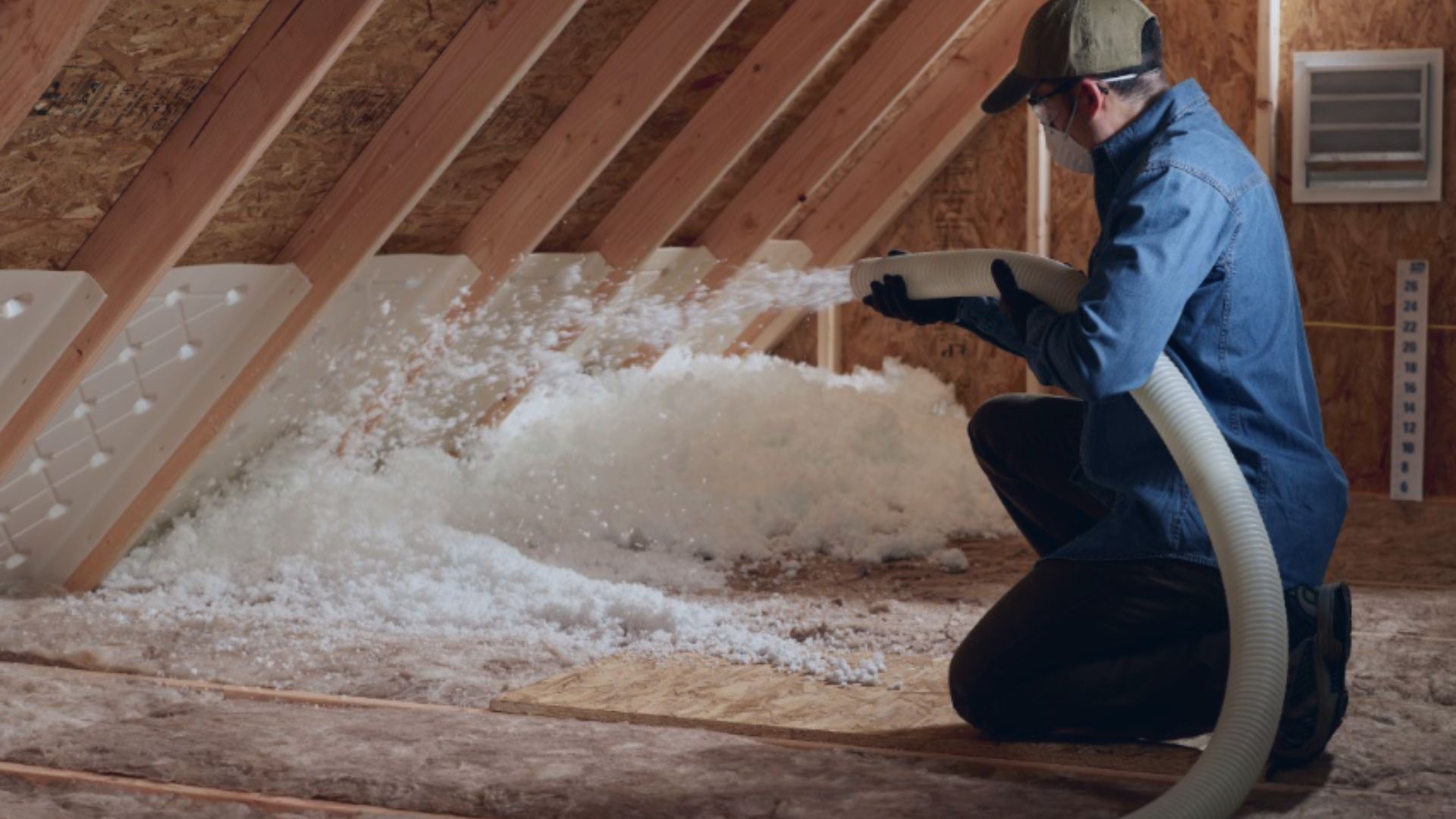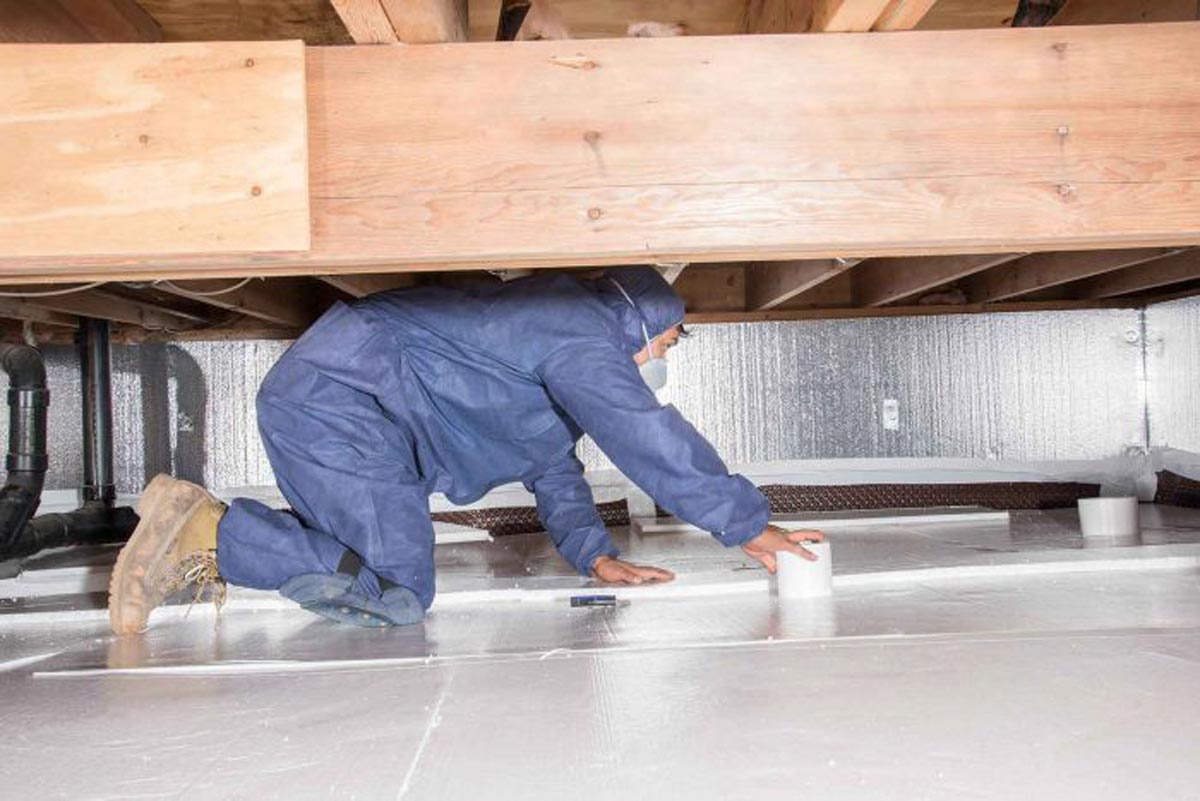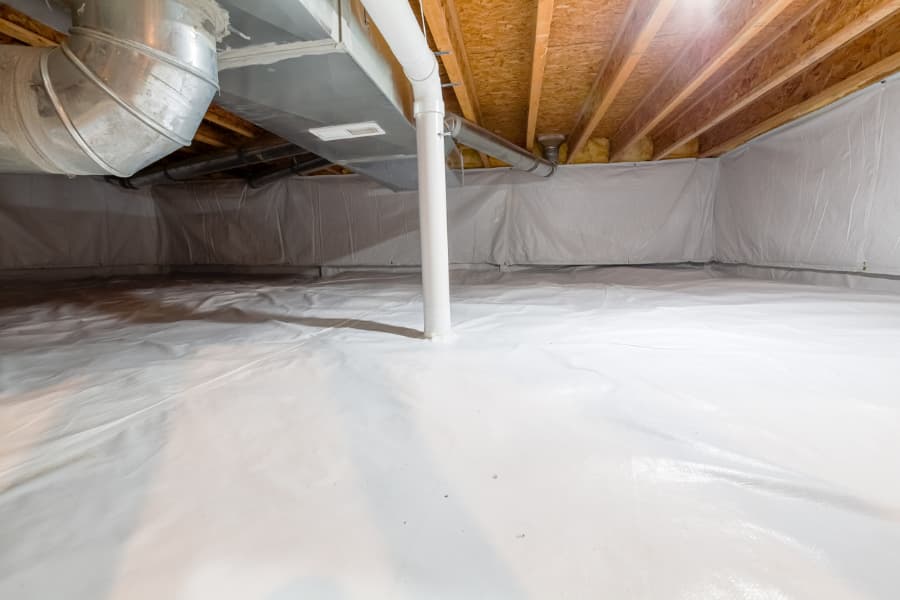Crawl space encapsulation is an effective method for sealing and insulating the crawl space beneath a home. This practice is essential for enhancing energy efficiency and maintaining a healthier living environment. By addressing moisture control, air sealing, and insulation, crawl space encapsulation can reduce energy consumption and prevent potential structural damage due to humidity and mold growth. This article explores the importance of encapsulation in creating energy-efficient homes, providing detailed information on the process, factors to consider, and common misconceptions.
What Is Crawl Space Encapsulation?
Crawl space encapsulation involves the installation of a vapor barrier on the floors and walls of a crawl space, along with sealing vents, cracks, and openings. This process creates an airtight and moisture-resistant environment, which helps to maintain a consistent temperature throughout the home. Encapsulation also prevents the infiltration of outside air and moisture, which can contribute to energy loss, mold growth, and air quality issues.
This technique is particularly beneficial for homes with unconditioned crawl spaces. It offers numerous advantages, including reduced energy bills, improved indoor air quality, and longer-lasting home infrastructure.

How Crawl Space Encapsulation Enhances Energy Efficiency
The primary role of crawl space encapsulation is to improve the energy efficiency of a home. When encapsulated, a crawl space no longer allows cold or humid air from outside to infiltrate the home’s interior, reducing the workload on HVAC systems. This leads to more consistent indoor temperatures, decreased energy consumption, and ultimately lower heating and cooling costs.
In addition to improving thermal insulation, encapsulation helps to control moisture levels in the crawl space. Excess moisture can lead to mold, mildew, and rot, all of which compromise the structural integrity of a home. By mitigating these issues, encapsulation contributes to energy savings while preserving the home’s value.
Types of Crawl Space Encapsulation Systems
Crawl space encapsulation systems come in different forms, each suited to specific needs. The following table outlines the various types of systems and their unique characteristics:
| System Type | Features | Benefits | Ideal Use Case |
| Vapor Barrier with Insulation | Thick plastic sheets (6 mil or more) applied to floors and walls; optional fiberglass insulation. | Prevents moisture buildup; adds thermal resistance. | Homes with moderate humidity levels. |
| Conditioned Crawl Space | Insulated walls and sealed vents; crawl space becomes part of home’s conditioned space. | Maintains constant temperature; reduces mold risk. | Homes in colder or high-humidity climates. |
| Dehumidification System | Sealed crawl space with a dehumidifier installed to control moisture levels. | Keeps crawl space dry, preventing mold growth. | Areas with high humidity or wet climates. |
| Sealed Crawl Space with Insulation | Encapsulation system combined with rigid foam insulation. | Provides high thermal resistance; moisture and air sealing. | Homes with extreme temperature fluctuations. |
Technical Considerations for Encapsulation
Several technical factors must be considered before deciding on the best encapsulation system for your home. These factors will ensure that the system is effective in reducing energy costs and maintaining air quality.
Insulation Material Choices
The type of insulation used in encapsulation can vary depending on climate and budget. Common materials include fiberglass batt insulation, spray foam, and rigid foam board. Below is a comparison of insulation options:
| Insulation Material | R-Value (Thermal Resistance) | Cost Range | Pros | Cons |
| Fiberglass Batt Insulation | R-11 to R-30 | Low to Moderate | Economical, widely available | Can lose effectiveness if wet or compressed |
| Spray Foam Insulation | R-6 to R-7 per inch | High | Excellent air barrier, moisture resistant | Expensive, requires professional installation |
| Rigid Foam Board | R-5 to R-6 per inch | Moderate | High R-value, moisture resistant | Can be difficult to install, expensive |
Moisture Control and Ventilation
Proper moisture control is essential for preventing mold and mildew growth. The encapsulation system should include a vapor barrier, along with sealed vents to keep outside air and moisture from entering. Some systems also feature a dehumidification component for homes in very humid areas.
Things to Consider Before Making a Decision
Before opting for crawl space encapsulation, homeowners must consider several factors to ensure the solution is right for their specific needs:
- Climate: The effectiveness of encapsulation varies depending on the climate. Homes in colder or very humid regions may benefit more from full encapsulation, while homes in mild climates may only require partial sealing.
- Cost: While the long-term energy savings are significant, the initial investment for encapsulation can be high. Homeowners should evaluate their budget and decide whether the upfront cost is justifiable for the potential savings.
- Existing Damage: If there is existing mold, wood rot, or structural damage in the crawl space, these issues must be addressed before installing the encapsulation system. Failing to do so can reduce the effectiveness of the encapsulation.
- HVAC Considerations: Homes with older or inefficient HVAC systems may experience greater benefits from encapsulation, as it can help reduce the overall load on these systems.
Common Questions
How long does a crawl space encapsulation system last?
Crawl space encapsulation systems typically last for 20-30 years when properly maintained. The vapor barrier may need occasional inspection for wear and tear.
Is crawl space encapsulation necessary for every home?
Not all homes require crawl space encapsulation. Homes with sealed basements or those built with concrete slabs may not benefit from the process. It is recommended for homes in humid or cold climates, or those experiencing moisture issues.
Can I encapsulate my crawl space myself?
While DIY kits are available, it is recommended to hire a professional for encapsulation. Proper installation is critical to ensure long-term effectiveness and prevent future issues.
Will encapsulating my crawl space lower my energy bills?
Yes, encapsulating your crawl space can lower energy bills by improving insulation and preventing the infiltration of outside air, reducing the workload on HVAC systems.

Make the Right Decision
Crawl space encapsulation plays a key role in the energy efficiency and structural integrity of a home. By carefully considering the climate, budget, and existing conditions of your crawl space, you can choose the most effective system for your needs. While the upfront cost can be significant, the long-term benefits of reduced energy consumption, improved air quality, and preservation of home value make it a wise investment for many homeowners.
FAQ
What is crawl space encapsulation?
Crawl space encapsulation involves sealing and insulating the crawl space to control moisture, temperature, and air quality, resulting in increased energy efficiency.
How does encapsulation impact indoor air quality?
Encapsulation reduces the infiltration of moisture and mold from the crawl space, which in turn improves the overall air quality in the home.
How much does crawl space encapsulation cost?
The cost varies depending on the size of the space and the type of system chosen, but it typically ranges from $5,000 to $15,000.
Can crawl space encapsulation prevent mold growth?
Yes, by controlling moisture and humidity, encapsulation prevents mold and mildew from forming in the crawl space.
Is encapsulation worth the investment?
For homes in areas with high humidity or temperature fluctuations, encapsulation can provide significant long-term savings by reducing energy costs and preventing structural damage.






